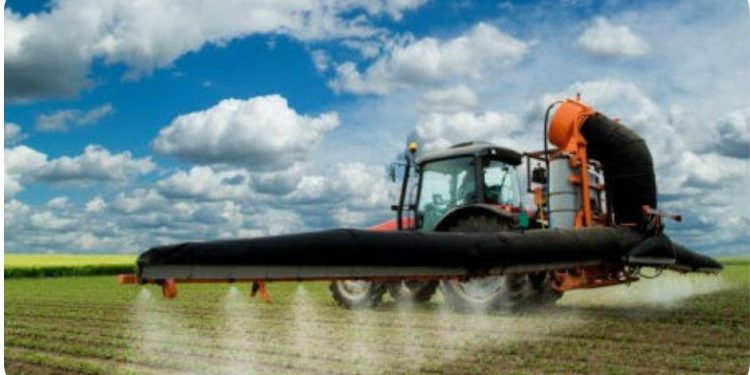Growers — extra care for your sprayer now can save time and money later.
So says Erdal Ozkan, an engineer and spray technology expert with the College of Food, Agricultural, and Environmental Sciences at The Ohio State University.
Ozkan, who is an agricultural engineering professor who also has appointments with Ohio State University Extension and the Ohio Agricultural Research and Development Center, said spending an hour or two now to prepare a sprayer for winter storage can help prevent problems with sprayer accuracy in the spring.
OSU Extension and OARDC are the outreach and research arms, respectively, of the college.

“If you want to avoid potential problems and save yourself from frustration and major headaches, you will be wise to give your sprayer a little bit of extra care before storing it for winter,” Ozkan said. “Don’t delay winterizing your sprayer — you don’t want a pump that is cracked and/or not working at its full capacity because it wasn’t properly winterized before the temperatures fall below freezing.
“This can prevent planting delays in spring and prevent sprayer problems in the spring resulting in misapplications of herbicides.”
In a recent posting of the Crop Observation and Recommendation Network (C.O.R.N) newsletter at agcrops.osu.edu/ Ozkan lists several steps growers should take before storing their sprayers for the season, including:
Rinsing
Rinse the whole system (tank, hoses, filters, nozzles) thoroughly. A sprayer that is not rinsed may lead to cross-contamination of products applied for different crops, and to clogging of nozzles. Leaving chemical residues in nozzles could lead to changes in their flow rates, as well as in their spray patterns, resulting in uneven distribution of chemicals on the target.
For effective rinsing of all the sprayer components, circulate clean water through the whole sprayer for several minutes first with the nozzles off, then flush out the rinsate through the nozzles. Rinsing should be done preferably in the field, or on a concrete chemical mixing/loading pad with a sump to recover rinse water. Also, it is important to read the chemical labels on pesticides when rinsing or cleaning a sprayer.
Cleaning
To prevent cross-contamination problems with sprayers, clean and rinse the entire spraying system with a cleaning solution mixed at a ratio of 1 part household ammonia to 100 parts water. You may first need to clean the tank with a mixture containing detergent if the tank was not previously cleaned.
Some chemicals require a specific rinsing solution; therefore, it is recommended to check the product label for recommended cleaning agents. Cleaning components on the outside of the sprayer deserves equal attention.
Winterizing
To prevent freezing, make sure there is no liquid left inside any of the sprayer parts. In order to prevent a cracked pump, after draining the water, add a small amount of oil, and rotate the pump four or five revolutions to completely coat interior surfaces. Check the operator’s manual to ensure the oil will not damage rubber rollers in the roller pump or rubber parts in a diaphragm pump.
If oil is not recommended, pour 1 tablespoon of radiator rust inhibitor in the inlet and outlet part of the pump to keep the pump from corroding. Another alternative is to put automotive antifreeze with rust inhibitor in the pump and other sprayer parts.
Storage
Store sprayers in a dry building to protect against snow, rain, sun and wind. Moisture in the air, whether from snow, rain or soil, rusts metal parts of unprotected equipment of any kind. Ultraviolet light softens and weakens rubber materials such as hoses and tires and degrades some tank materials.
If storing in a building is not possible, provide some sort of cover. When storing trailer-type sprayers, put blocks under the frame or axle and reduce tire pressure during storage.
Final look
Check the condition of all sprayer parts one more time before leaving the sprayer behind. Identify the parts that may need to be worked on or replaced. Check the tank and hoses to make sure there are no signs of cracks starting to take place. Check the painted parts of the sprayer for scratched spots. Touch up these areas with paint to prevent corrosion. Cover openings to prevent birds, rodents, insects and dirt from getting into the system.
For more information visit The Ohio State University Extension website.
— Tracy Turner, The Ohio State University
Source: OSU College of Food, Agricultural and Environmental Sciences


































